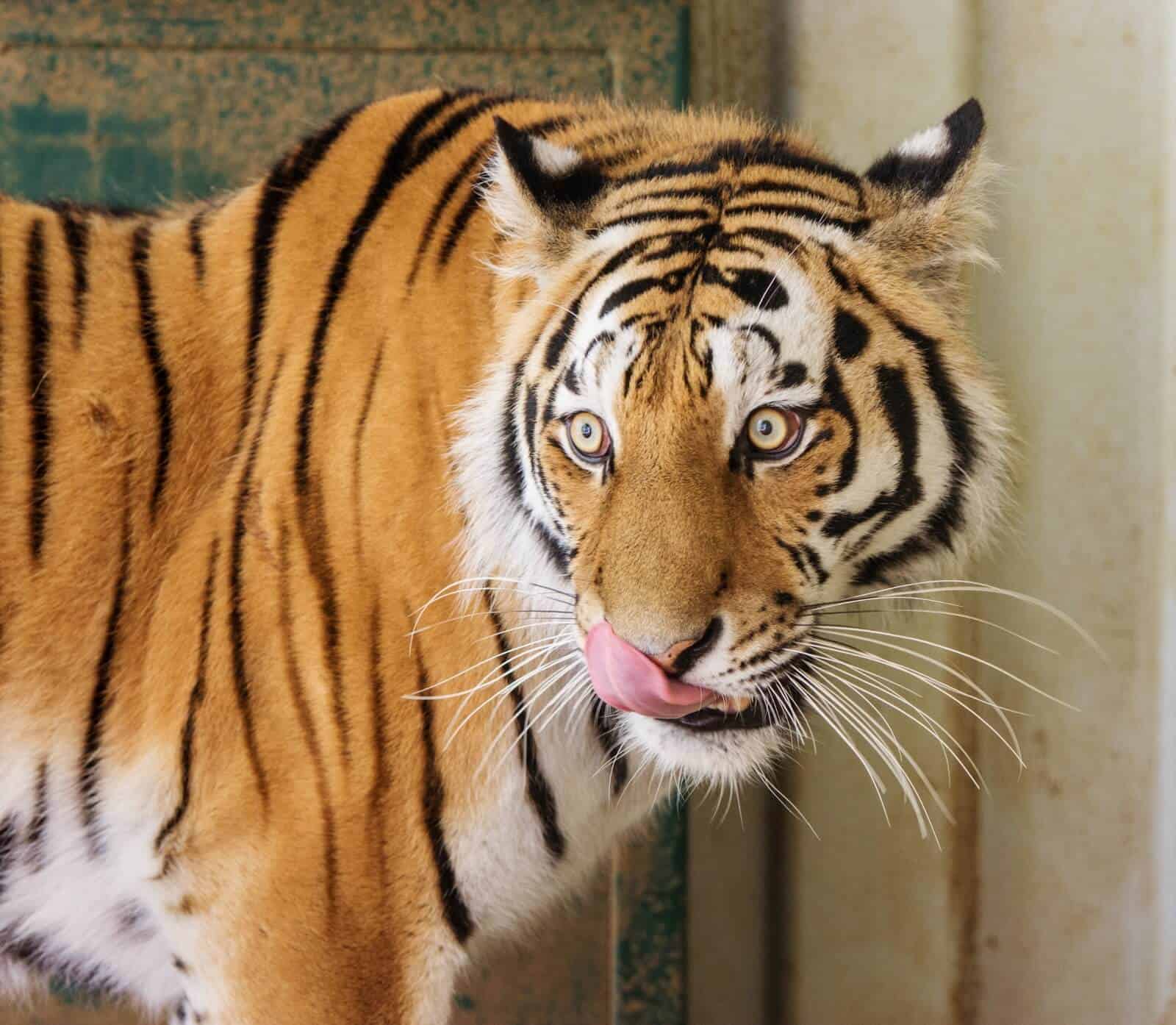
[et_pb_section bb_built="1" _builder_version="3.0.95" custom_margin="0px|||" custom_padding="0px|||"][et_pb_row _builder_version="3.0.95" custom_margin="0px|||" custom_padding="0px|||"][et_pb_column type="4_4"][et_pb_post_title _builder_version="3.0.95" title="on" meta="on" author="off" date="off" categories="off" comments="off" featured_image="on" featured_placement="background" text_color="dark" text_background="on" title_font="|||on|||||" title_font_size="45px" text_orientation="center" custom_padding="350px||0px|" title_text_color="#2765ae" custom_padding_phone="250px||0px|" custom_padding_last_edited="on|phone" title_font_size_tablet="35px" title_font_size_phone="30px" title_font_size_last_edited="on|tablet" saved_tabs="all" global_module="47477" /][et_pb_text admin_label="Standfirst" _builder_version="3.0.105" background_layout="light" text_font_size="21px" custom_padding="||20px|" text_line_height="1.3em"]
A pair of Amur tigers – the largest type of big cat in the world – have arrived at Longleat Safari Park in Wiltshire…
[/et_pb_text][et_pb_text admin_label="text" _builder_version="3.0.105" background_layout="light"]
The tigers, a male from Norway and a female from Sweden, are part of a European breeding programme for the endangered sub-species. It’s hoped the pair, who are both three years old and captive bred, will eventually have cubs of their own.
Native to the far east of Russia, the Amur tiger can weigh up to 300 kg and measure more than three metres in length. “The tigers’ arrival went very smoothly and both are in excellent condition,” said keeper Amy Waller.
“Initially we are keeping them physically separated from each other as they settle in and become familiar with each other. The next stage is getting them to share the enclosure together.
“The female is called Yana but the male is currently, rather unimaginatively, named Amur so one of our first tasks will be deciding on a new name for him.
“Everyone is extremely excited to have them here and hopefully, in time, to help boost the numbers of these extraordinary animals,” she added.
In the 1930s the tigers had nearly died out due to hunting and logging. At one stage it is thought the population fell as low as just 20–30 animals. Although they are still under severe threat their status was officially changed from Critically Endangered to Endangered in 2007. Wildlife experts believe the current population of around 540 individuals is the highest for more than a century.
[/et_pb_text][et_pb_text admin_label="Thanks To..." _builder_version="3.0.105" background_layout="light" border_width_top="1px" border_color_top="#2765ae" custom_padding="30px|||" border_style_all="dashed" header_4_line_height="1.4em" header_4_text_color="#2765ae"]
To find out more and plan your visit to Longleat, call 01985 844400.
[/et_pb_text][/et_pb_column][/et_pb_row][/et_pb_section]